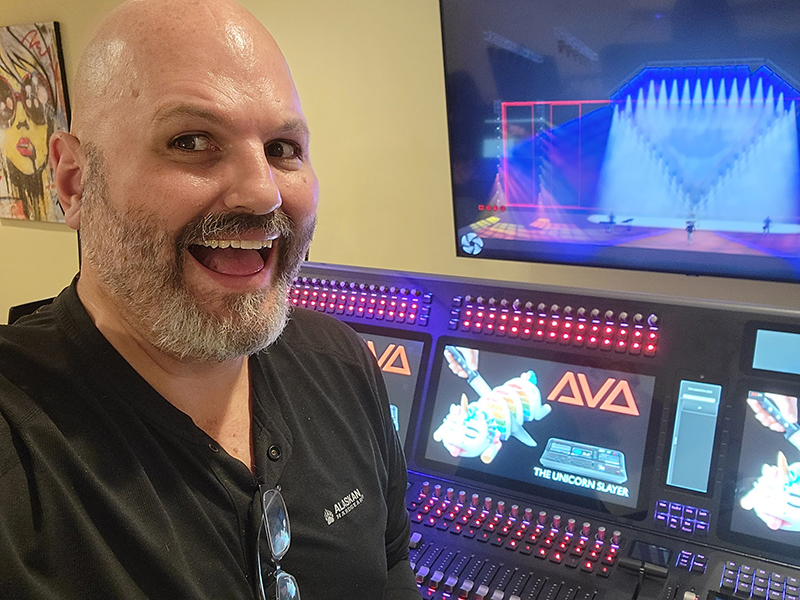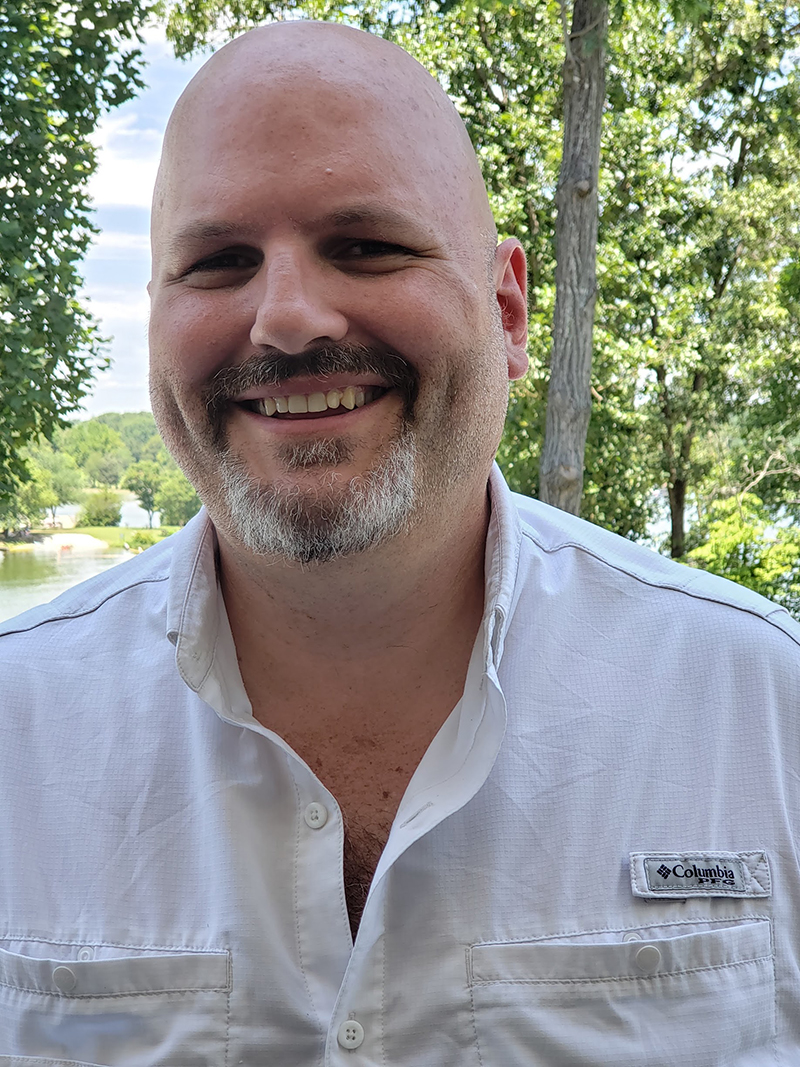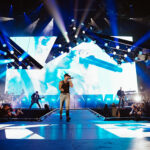
Since humble beginnings in a small warehouse just east of London in 1976, Avolites has had a remarkable run. Founder Ian Walley started the company with his Model 8 AVO meter (Amps, Volts, Ohms), which led to the name of the company. From that day onward, ‘visual control’ has been the driving force. They have been part of too many mega events to list but just a few include Queen tours and Live Aid shows in the mid-1980s, the Eurovision Song Contest (1989), and the Opening and Closing Ceremonies for the 2012 Summer Olympics in London. Through the years, Avolites’ pioneering work on lighting control products, media servers, software, and most significantly, its range of lighting consoles and dimmer racks, has been monumental. Today their long list of bar-raising products includes the Diamond, QM500, Sapphire, Arena, Quartz, and Tiger series—and that’s just the lighting consoles. But it takes more than innovative gear to make a company thrive—it takes people. Key to the success of the company in the Americas is National Sales Manager Brad White. Gregarious, quick to laugh, and passionate about the industry, he’s celebrating two personal anniversaries this year: His 30th year in the industry and his 25th year with Avolites. “I’ve always been fascinated by a perfect mix of the technical and creative side, and that is Avo,” White says. “They have kept pushing the envelope.”
Knoxville Roots
The list of live event industry leaders that have come out of the seemingly humble town of Knoxville, TN is well known. White is one of its natives and attended Central High, as did others who would go on to be among the best in the business including Mark Haney (Parnelli Award-winning video director), André Huff (Martina McBride’s LD/PM), and Jason Robinson (WWE production designer). “The funny thing is, it was all random—it’s not like our high school had some great theater program or tried to train kids for the industry,” White says with a laugh.
Technically inclined, he went first to the University of Tennessee where he studied engineering; but that wasn’t creative enough for him, so he moved on to architecture before then moving again to study art at East Tennessee State University. In college, his 6’-5” 300-pound frame made him an obvious hire as a bar bouncer, and there he worked at the aptly named bar The Library in Knoxville (get it? College kids could say, ‘Yes Mom, I spent the weekend at the library.’) Up-and-coming acts at the time like R.E.M. and the Red Hot Chili Peppers would play there. He dabbled in some crew work and was noticed enough to get a one-off job working as crowd control at a Megadeth show in 1991. (Just this year he got to work with them again, and he says he and guitarist Dave Mustaine reminisced about those early days.) But what he considers his first real industry gig came shortly after that, when he was tapped for a Van Halen show at The University of Tennessee’s Thompson-Boling Arena.
White tells the story: “I was a truck loader, and pulling out a pre-rigged aluminum truss was pretty easy,” he says. “Then it was just me and another guy pulling out the speakers, and they were freakin’ heavy! So, I decided then to do lights.” He adds that he was fascinated watching the lighting rig come together, and he could see an amalgamation of his interest in technology and “painting air with light.” He was immediately hooked.
That same year, he landed at the “old school” TERI Productions and thus officially began his live event career. At TERI, he came under the tutelage of Rick Berry, J.R. Sanders, and the owner, Jim Coatney. There he learned how to drive a truck, weld, and finally, build an entire rig. He quickly toiled his way to the top and loved working shows all over the country. The following year, White had the company purchase their first Avolites console for a Patti LaBelle tour. Prior to delivery, he got his hands on a manual explaining the new cutting-edge technology. “I just read those 12 pages six times and didn’t understand a word of it,” he notes. But White must have picked up something because when the board arrived, he was the only person in the shop who could run it. From there, he worked a range of shows from youth events to large festivals, highlighted by major events such as the 1996 Summer Olympics in Atlanta, and a few shows on the Rolling Stones’ Bridges to Babylon tour during 1997-98.
Mr. Avo
The industry kept coming to Knoxville, and soon England-based Avolites hung up a shingle there as well. As White explains it, after an initial foray into the States, the company decided to pull back and concentrate on Europe. Rob Steel, a dimmer tech fresh off a Police world tour, took over Avolites in the U.S., and at a dinner with White offered him a job. White, ready for his next adventure, took the position with Avolites as director of technical services in charge of North and South America.
His first excursion out of the country for the new Avolites America was to Santiago, Chile. Shakira was about to start a run of shows, but word came one morning that the Avolites Diamond console was down. With assorted tools and parts, White boarded a plane that night. The next morning, he was picked up from the Santiago airport and taken directly to the venue. He spotted the problem immediately: A chip in the back was hanging out a little. “I pushed the card all the way in, and that was it,” he says, laughing. “I watched sound check, showered, and went back home.” The head Chilean technician was not amused as it meant “$4,000 was spent for someone to push a chip all the way into a slot.”
Another story involves his wingspan: He was on hand when Shania Twain was rehearsing for a tour, with a Diamond 2 console under the stewardship of LD Jeff Ravitz. White was asked to patch 1-to-1 for all 180 channels. White informed Ravitz that this was easily done automatically by just holding the first button and hitting the last button at the same time. Ravitz stared at him and pointed out that it was, in fact, a 6’-6” wide console. “Well, I have a six-foot reach, so by literally laying my cheek on the console and stretching, I was just able to do that!”

Back Again
For 12 years, White was indelibly linked to Avolites, so much so that he came to be called “Mr. Avo.” Every Pearl console had ‘Brad White = Mr. Avo’ etched in and was sent out all over the world. But while having a couple of beers in 2008 with Dave Thomas of James Thomas Engineering—whose U.S. operation was also based in Knoxville, TN—it came up that maybe White was looking to get back to his roots programming and designing shows on a freelance basis. Thomas Engineering’s PixelRange products were starting to ship, and help was needed in the technical sales director position and project management department. Meanwhile, though, Avolites calls kept coming in for Mr. Avo. “It’s a small industry, and we’re all friends, so I would get Avo-related calls of the ‘hey-how-do-I?’ variety, and I would always answer them.” Working for PixelRange also didn’t keep Avolites Ltd. from bringing him across the pond to consult and go to the PLASA trade show in their home base of London every year, either. Meanwhile, over at TERI, Coatney’s son Jay had lured him back for a brief stint. Finally, in 2013, he returned to Avolites.
In 2014, Avolites was looking to expand distributorship when they noticed Group One and what a fantastic job they did with DiGiCo. “I got a call from Jack [Kelly], and he is a matter-of-fact guy,” White says admiringly. A plane ticket followed. “We talked all afternoon, had a couple of martinis, and I showed him my business plan.” Kelly agreed it was solid and pledged to work for the brand. It’s been a happy successful partnership since.
All indications point to White’s 30-year anniversary and Avolites’ 45 years in business to keep going up in numbers. “One of the things that has kept me in this industry is that my attitude has always been, ‘I’ll do this until it stops being fun,’” he says. “Avo has always been filled with people who want to innovate, who like to create the next new thing.”
In fact, the next frontier has already been started for the company with the integration of video into one console. “A single Synergy system, a single visual canvas,” he explains. “When a designer wants ‘warmth’ across all the stage from all the components with the touch of a button, that’s what I want. That’s where we are headed—we’re just pushing technology down the road.” As for his career so far, “I have spent my career making lifelong friends and making a great living,” White says. “It is always surreal to reflect on this. I’m the luckiest guy in the world.”


